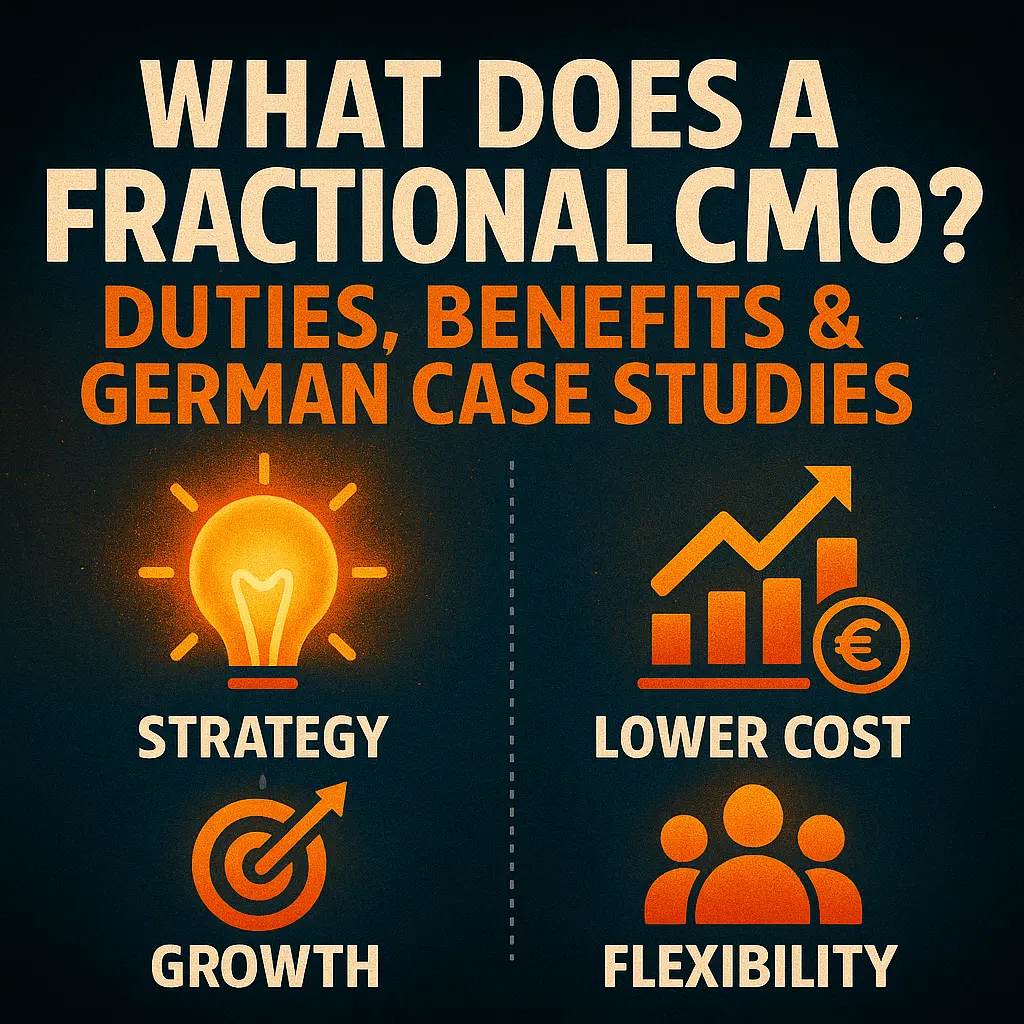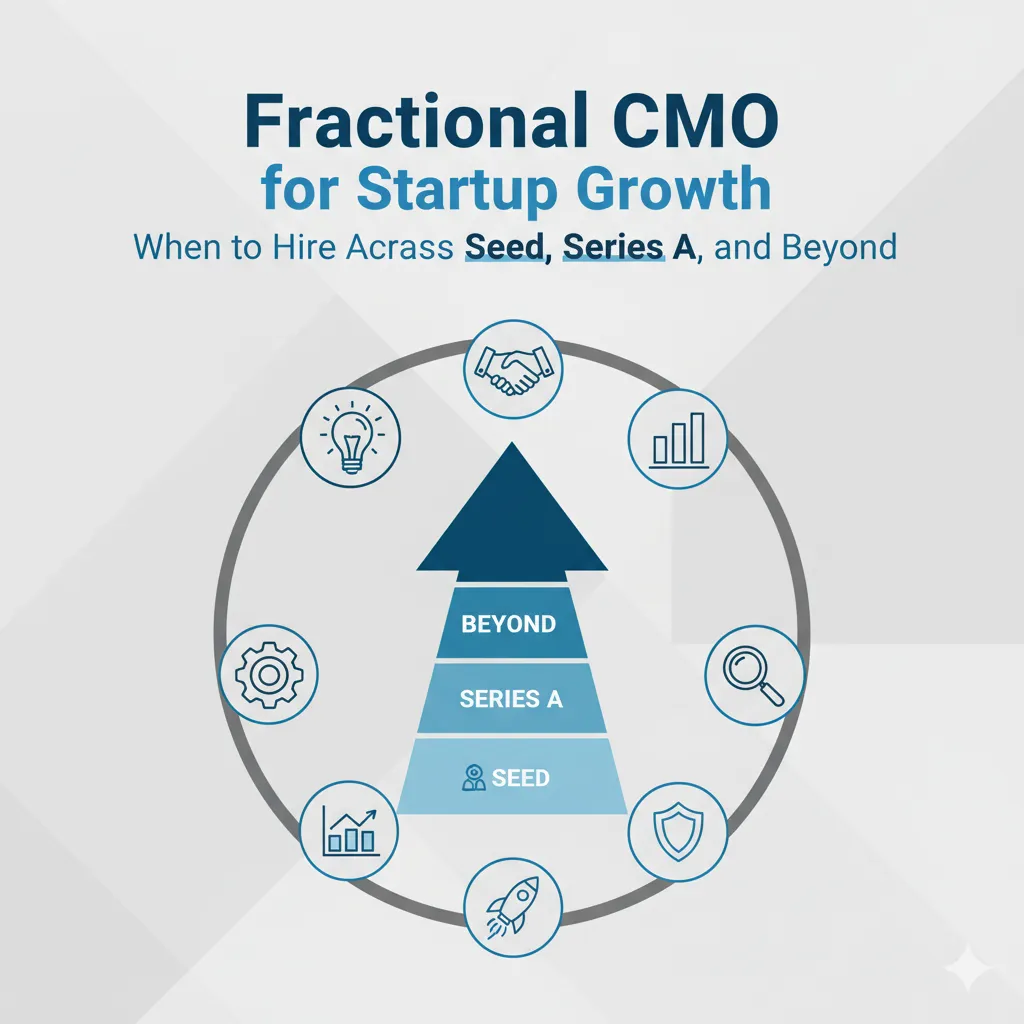Companies with limited marketing budgets are discovering a counterintuitive truth: hiring senior marketing leadership part-time often delivers better results than full-time appointments. Recent data shows that businesses using fractional CMOs report 29% higher revenue growth compared to traditional hiring models, while cutting leadership costs by up to 74%.
This shift challenges the conventional wisdom that executive roles require full-time commitment. Understanding what is a fractional CMO reveals why this model is gaining traction—these professionals bring C-level expertise without the overhead of permanent salaries, benefits, and equity packages. The fractional cmo vs cmo debate isn’t just about cost savings; it’s about accessing specialized skills precisely when needed.
German companies, particularly in the SaaS sector, are leading this adoption trend as they balance aggressive growth targets with budget constraints. This strategic approach allows businesses to tap into decades of marketing experience while maintaining financial flexibility during uncertain economic conditions.
Contents
- 1 What is a Fractional CMO and Why German Companies are Embracing This Role
- 2 Core Responsibilities and Daily Duties of a Fractional CMO
- 3 The Business Case: Cost Savings and Strategic Benefits
- 4 Real German Success Stories: Case Studies and Results
- 5 Getting Started: How Hire a Fractional CMO
- 6 FAQ
- 7 Sources
Key Takeaways
- Fractional CMOs deliver 29% higher revenue growth while reducing marketing leadership costs by 40-60% compared to full-time hires
- Core responsibilities include GTM strategy development, lead generation automation, and digital transformation initiatives using AI and CRM tools
- German companies achieve significant results including 30% faster content creation and 25% increased engagement through fractional CMO partnerships
- Flexible engagement models range from $2K-$12K monthly retainers to project-based work, aligning costs with business needs
- Cross-industry expertise provides unbiased strategic audits and rapid implementation of performance-driven campaigns
What is a Fractional CMO and Why German Companies are Embracing This Role
Definition and Core Concept
A fractional CMO represents a paradigm shift in marketing leadership, offering senior-level strategic guidance without the commitment of a full-time executive. Unlike traditional CMO roles that require permanent placement, fractional executives work on retainer or project basis, typically dedicating 10-30 hours per week to your business.
The fractional cmo vs cmo comparison reveals key distinctions. Traditional CMOs focus on long-term organizational building and internal politics. Fractional CMOs prioritize immediate impact and measurable results. They’re not concerned with office dynamics or career advancement within your company—their reputation depends entirely on delivering tangible outcomes.
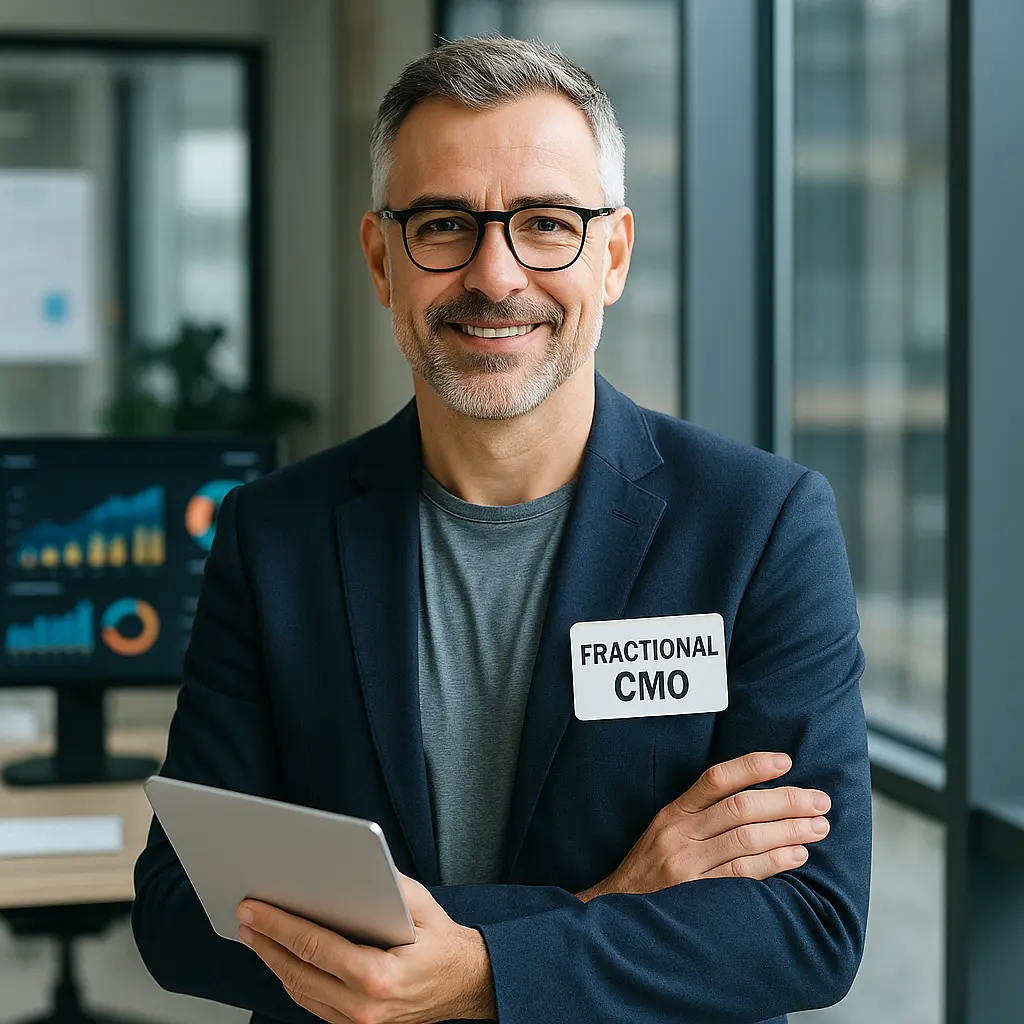
Growing German Market Adoption
German companies are embracing this model with remarkable enthusiasm. SaaS businesses lead the charge, recognizing that budget-conscious growth strategies often outperform expensive permanent hires. The data supports this trend: companies using fractional CMOs report significantly higher revenue growth while maintaining operational flexibility.
What makes this particularly relevant for German businesses is the regulatory environment and market sophistication. Fractional CMOs bring cross-market experience that helps companies avoid common pitfalls while accelerating time-to-market for new initiatives.
Core Responsibilities and Daily Duties of a Fractional CMO
Strategic Marketing Leadership
Strategic leadership forms the foundation of fractional CMO work. These professionals develop GTM strategies that align with business goals, target audiences, and market positioning. They don’t just create plans—they balance inbound and outbound channels like SEO, paid advertising, and account-based marketing to optimize lead generation and conversion rates.
Market research becomes a critical component, identifying gaps, trends, and competitor weaknesses that inform strategic decisions. Fractional CMOs create cohesive marketing plans using CRM tools like HubSpot to automate nurture workflows and track Marketing Qualified Leads (MQLs). They segment audiences by behavior, demographics, and engagement patterns, reducing waste while improving conversion efficiency.
Lead Generation and Pipeline Growth
Building effective lead funnels requires both technical expertise and strategic thinking. Fractional CMOs implement automation tools to nurture prospects from initial awareness through final conversion. They establish lead scoring systems that identify high-potential prospects and ensure smooth handoffs to sales teams.
The focus on ROAS (Return on Ad Spend) and ROI optimization drives every decision. By mapping customer journeys, these professionals streamline lead movement through sales funnels. A/B testing on landing pages and email campaigns becomes standard practice, ensuring consistent delivery of qualified leads that directly contribute to revenue growth.
Brand Authority and Content Strategy
Content strategy extends far beyond blog posts and social media. Fractional CMOs develop comprehensive content calendars focusing on SEO-optimized topics aligned with buyer personas. They execute perception-shaping activities including webinars, speaking engagements, and strategic PR efforts.
Brand messaging consistency across all touchpoints—websites, emails, advertisements—becomes a priority. These professionals prioritize high-impact PR activities over generic press releases, seeking editorial features and podcast appearances that build genuine credibility. Data analytics measure content effectiveness, ensuring alignment with customer intent and business objectives.
Digital Transformation and Tech Integration
Technology integration represents one of the most valuable aspects of fractional CMO expertise. They implement digital tools including AI, CRM platforms, and analytics systems to enhance marketing efficiency. Tech audits optimize existing marketing stacks, often revealing opportunities to streamline operations and reduce costs.
Team upskilling on emerging technologies like AI and MarTech ensures organizations stay competitive. In German consumer goods case studies, fractional CMOs reduced content creation time by 30% and increased customer engagement by 25% through AI-driven strategies. This demonstrates their crucial role in bridging technology gaps and future-proofing marketing operations.
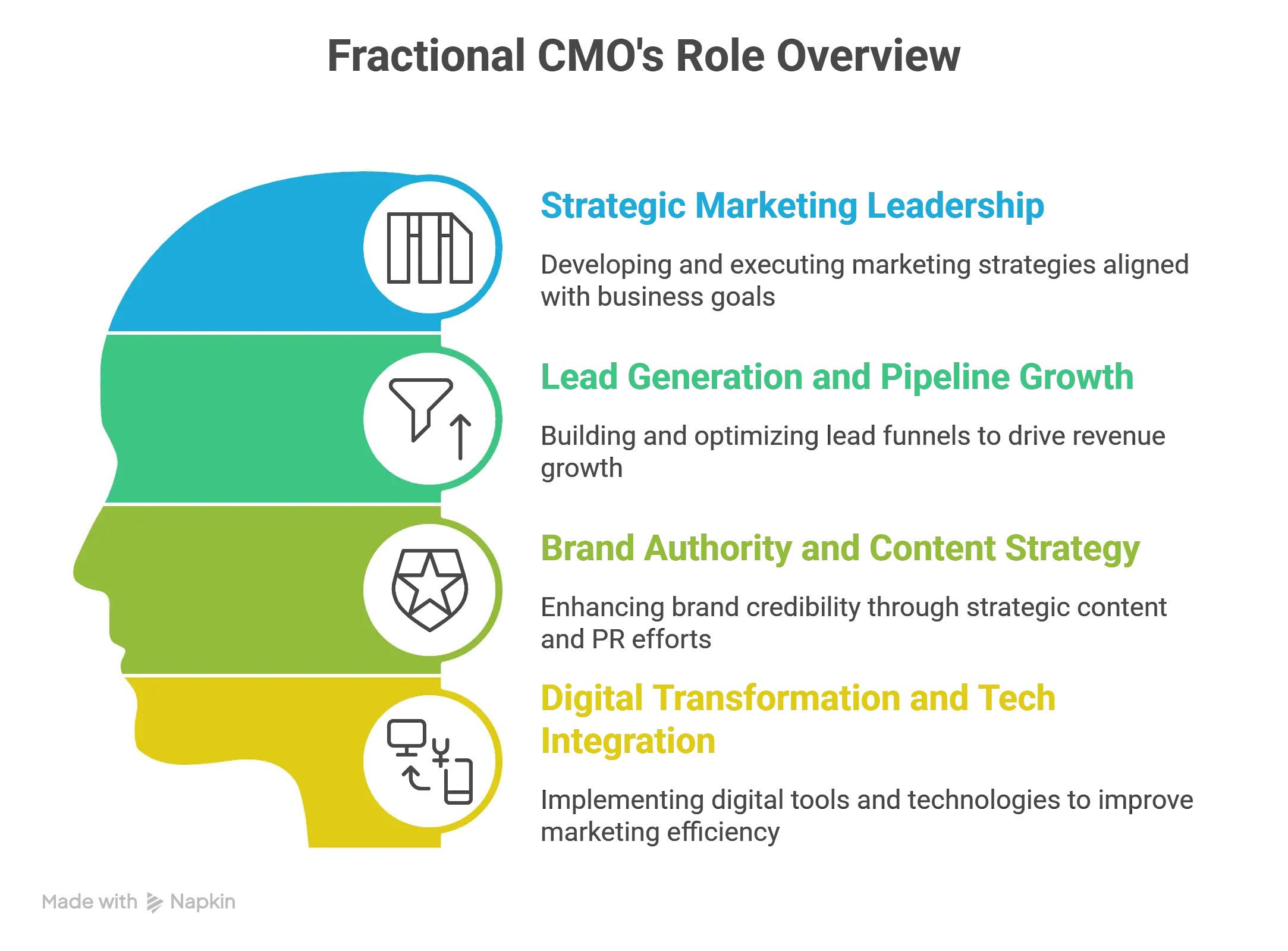
The Business Case: Cost Savings and Strategic Benefits
Cost Efficiency
The financial advantages of fractional CMO engagement are immediately apparent. Companies achieve 40-60% savings compared to full-time CMO costs, which typically range from $200K-$550K annually plus benefits. HubSpot estimates show a 74% cost reduction compared to traditional in-house hires.
Flexible retainer structures, ranging from $2K-$12K monthly, align perfectly with fluctuating business budgets. German SaaS companies particularly benefit from this approach, accessing senior expertise without committing to full-time salaries. Retainers allow businesses to scale marketing efforts during peak periods without long-term financial obligations.
Flexibility and Scalability
Agile marketing approaches become possible when leadership can adapt quickly to changing business needs. Fractional CMOs align with short-term goals like product launches or market entry without requiring long-term contracts. This flexibility proves critical for startups and SMEs with dynamic marketing requirements.
The ability to pivot from brand-building to demand generation during different growth phases provides strategic advantages. Companies report 29% higher revenue growth when using fractional models versus traditional approaches, largely due to this adaptability and focus on immediate results.
Expertise and Objectivity
Cross-industry experience prevents tunnel vision that often affects internal teams. Fractional CMOs bring unbiased perspectives from diverse markets, identifying blind spots like underperforming advertising channels or missed opportunities. Years of experience across sectors like technology and consumer goods create hybrid strategies for maximum impact.
Strategic audits conducted by external professionals reveal issues that internal teams might overlook. This objectivity, combined with immediate implementation capabilities, provides rapid value that justifies the investment.
Quick Implementation
Structured onboarding processes enable immediate impact from fractional CMO engagements. These professionals don’t require months of company culture integration—they focus on action-oriented strategies that deliver results quickly. Rapid deployment of campaigns and processes, including SEO improvements and AI integration, characterizes their approach.
Speed-to-market advantages become particularly valuable during competitive situations or time-sensitive opportunities. The combination of experience and urgency creates measurable improvements within weeks rather than quarters.
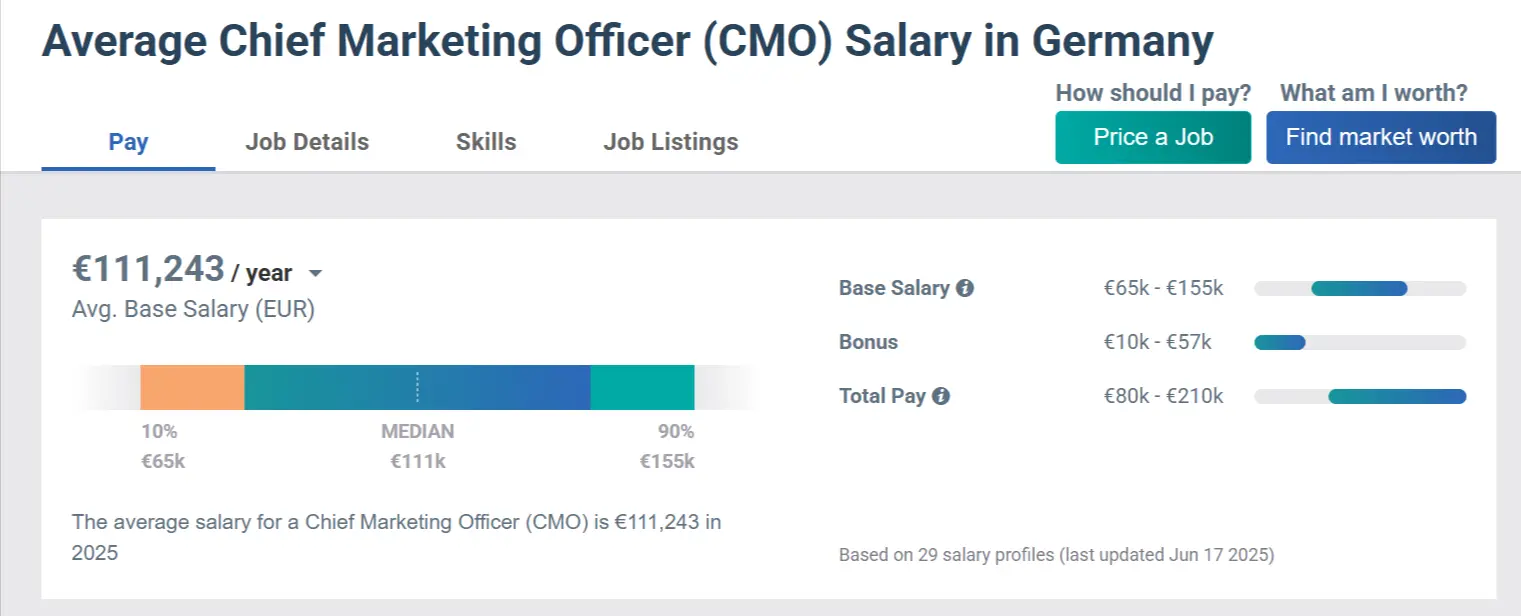
Real German Success Stories: Case Studies and Results
Consumer Goods and GenAI Integration (2025)
A German consumer goods company faced a common challenge: lacking expertise to implement GenAI for personalized marketing and content creation. The solution involved hiring a fractional CMO with AI specialization to integrate advanced tools and train existing teams.
Results exceeded expectations. Content creation time decreased by 30%, while customer engagement increased by 25% through personalized recommendations. Conversion rates improved by 5% through optimized campaigns that leveraged AI-driven insights. This case demonstrates how specialized fractional expertise can bridge critical technology gaps.
Cross-Functional Alignment Success
The Electrical Association of Minnesota provides another compelling example of fractional CMO impact. Wild Fig Marketing reports that disjointed marketing efforts across multiple teams and projects created significant inefficiencies and missed opportunities.
Partnership with a fractional CMO unified brand messaging and streamlined workflows across international teams. Enhanced lead generation through targeted digital campaigns followed, along with cost-effective prioritization of marketing initiatives. The improved alignment between teams created sustainable growth foundations.
German SaaS Cost Optimization
Multiple German SaaS companies have leveraged fractional CMOs to balance growth ambitions with tight marketing budgets. The cost efficiency model proves particularly effective in this sector, where rapid scaling demands both expertise and financial discipline.
These companies achieved 40-60% savings compared to full-time CMO costs while generating higher ROI from data-driven campaigns and improved lead qualification processes. The combination of budget optimization and performance improvement makes fractional engagement especially attractive for growth-stage SaaS businesses.
Getting Started: How Hire a Fractional CMO
Hiring Considerations for Businesses
Companies evaluating fractional CMO options should establish clear performance metrics and project scopes before engagement. Retainer structures vary significantly, from hourly arrangements to monthly commitments, depending on business needs and project complexity.
Vetting processes should emphasize relevant industry experience and cultural fit. The best fractional CMOs demonstrate immediate value during initial consultations, providing actionable insights that justify their engagement. Contract terms should include specific deliverables and success measurements to ensure alignment.
Market Rates and Compensation
Current market rates for fractional CMO services reflect the value these professionals provide. Ryan Holck reports 2025 rates ranging from $150-$500 hourly, with monthly retainers typically falling between $2K-$12K depending on scope and industry complexity.
Project-based pricing offers another option, particularly for specific initiatives like rebranding or digital transformation. German market rates align closely with international standards, though specialized expertise in areas like AI integration or regulatory compliance commands premium pricing.
Success Measurement and Best Practices
Effective fractional CMO relationships require clear success metrics from the beginning. Key performance indicators should include lead generation improvements, conversion rate optimization, and revenue attribution to marketing activities. Time-to-revenue measurements help demonstrate immediate impact.
Red flags include vague deliverables, lack of industry references, or unwillingness to commit to measurable outcomes. The best fractional CMOs provide transparent reporting and regular strategy updates, ensuring clients understand both progress and challenges throughout the engagement.
FAQ
What specific duties does a fractional CMO handle daily?
Fractional CMOs focus on high-impact activities including GTM strategy development, lead generation optimization, and brand messaging consistency. They conduct market research, implement marketing automation tools, and execute digital transformation initiatives while providing strategic guidance to internal teams.
How do fractional CMO costs compare to full-time executives?
Companies typically save 40-60% compared to full-time CMO salaries ($200K-$550K annually). Monthly retainers range from $2K-$12K, allowing businesses to access senior expertise without long-term commitments or benefit costs while maintaining budget flexibility.
What results can German companies expect from fractional CMO partnerships?
German case studies show 30% faster content creation, 25% increased customer engagement, and measurable conversion rate improvements. Companies report enhanced lead generation, better cross-functional alignment, and higher ROI from data-driven marketing campaigns within months of engagement.
How quickly can a fractional CMO deliver measurable results?
Experienced fractional CMOs provide immediate impact through structured onboarding and action-oriented strategies. Initial improvements often appear within 4-6 weeks, including optimized ad spend, enhanced lead qualification processes, and streamlined marketing operations that directly contribute to revenue growth.
Sources
- Kalungi – What Does a Fractional CMO Do?: Their Responsibilities
- Chief Outsiders – Fractional CMO | Fractional Chief Marketing Officer
- Thirdwork – What Is a Fractional Chief Marketing Officer? (2024 Updated)
- Useshiny – Fractional CMO for Startups: Expert Marketing Leadership
- B2BMarketingWorld – Fractional CMO: Definition, Duties, and Responsibilities Explained
- Storybuilt Marketing – Fractional CMO
- Gofractional – What Does a Fractional CMO Do + How To Hire the Right
- Kalungi – What is a Fractional CMO? Is it Right for Your SaaS Startup?
- Carter Murray – The rise of the fractional Chief Marketing Officer
- WSI – Fractional CMO Services | Fractional Chief Marketing Officer
- Consultport – Fractional CMO: Flexible Solutions for Strategic Marketing
- Wild Fig Marketing – Doing Better Business With Fractional CMO: A Case Study
- Valenta.io – Fractional CMO Services
- Atomic Revenue – Increase MQLs & Integrate with Fractional CMO & Digital Ops Program

